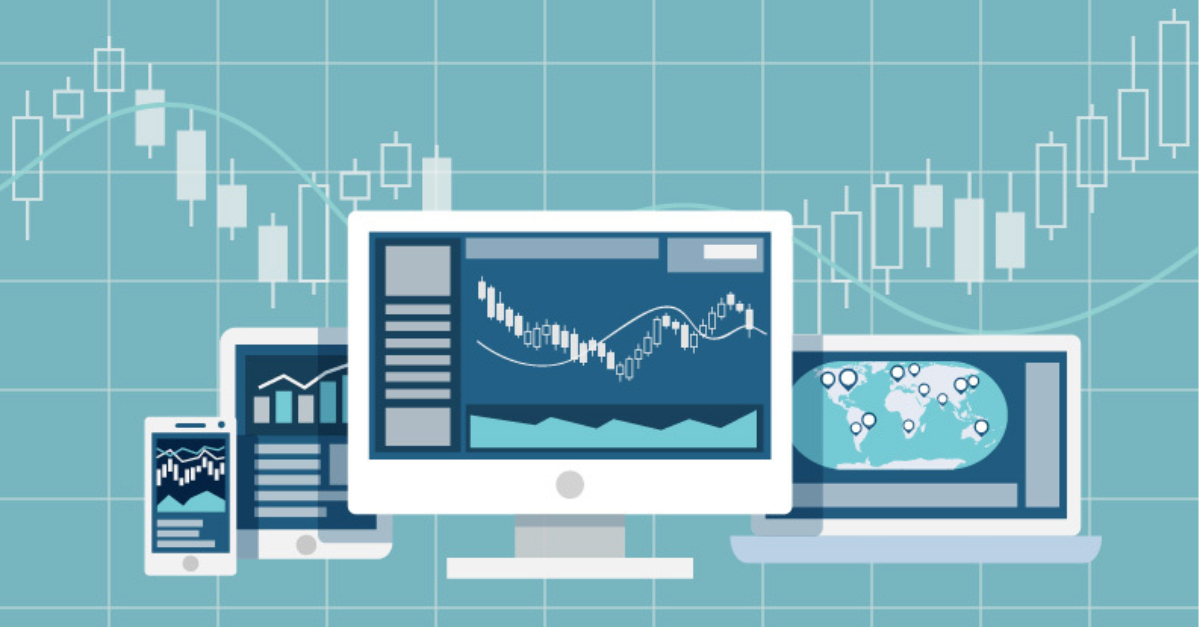FlowBank offers you the possibility to trade on a broad range of markets. This article aims to overcome what can be a daunting process of deciding what to trade and invest in.
In this article we will introduce you to the different asset classes available to trade, look at what moves those markets and who they might be suitable for.
Indices
.jpg?width=1200&name=shutterstock_741679045%20(1).jpg)
Indices are one of the most popular traded asset class at FlowBank. A stock index measures the performance the stock market, or more specifically a section of it. Stock indices are commonly, but not always compiled by country. These indices can then used as benchmarks to track the performance and the health of that country’s economy.
For example, the FTSE is the benchmark index for the UK. The Dax is the benchmark index for German and the IBEX is the benchmark index for Spain. In the US the S&P 500 is the benchmark index compiled of 500 large US stock by market capitalization. The Down Jones is made up of 30 large US stocks and the Nasdaq represents the 100 largest non-financial stocks listed on the Nasdaq stock exchange.
Stock indices can move up and down depending on factors such as macro-economic releases like inflation data, GDP data, employment figures, interest rates decisions and geopolitical events such as political elections or trade disputes.
One of the advantages of trading indices is that the information to do research is easily available and often discussed in the media. However, it is worth noting that these events are often difficult to forecast.
There are other reasons why indices are popular. One such reason is that an index covers a wide range of sectors, offering more diversification that a single stock. Furthermore, with FlowBank, it is possible to trade indices 24 hours a day. This gives an element of flexibility. It is less restrictive than trading shares, which must be traded the hours of the exchange. Finally, indices are liquid. This means that it is possible to buy and sell FX without delay and pairs often have a tight spread. As a result, indices, particularly major indices, tend to be cheap to trade compared to other assets.
FX

FX, or forex as it is also known is another very popular asset to trade. In fact, it is the most traded market in the world, with over $5 trillion worth of transactions globally every day (2016 Triennial Central Bank Survey of Foreign Exchange and OTC Derivatives Markets Activity).
FX is always traded in pairs. You are trading the value on one currency against the other. For example, if you were to take a position on EUR/USD you are trading the value of the euro against the dollar. The most popular currency pairs to trade are EUR/USD, USD/JPY, GBP/USD, USD/CHF, AUD/USD and USD/CAD.
FX is not traded on a central exchange; therefore, it is possible to trade it 24 hours a day from Monday morning in Australia through to Friday evening in New York. Given the extended hours that FX pairs are traded, they suit a wide range of different trading style, from very short term to much longer term. Currency pairs, particularly the most traded currency pairs tend to be very liquid meaning that they have a tight spread and so are relatively cheap to trade compared to other assets.
Like stock indices, FX pairs can move up or down depending on factors such as macro-economic data, particularly GDP data, inflation numbers, employment figures, central bank monetary policy and geopolitical events. Macro events can be identified in advance using an economic calendar. However geopolitical events can develop very suddenly and unpredictably, resulting in big swings in the currency markets. Whilst volatility is a trader’s friend, large unpredictable moves in the market can be very difficult to trade. The best approach when trading FX is to keep to strict stop losses and a well-planned approach.
Commodities

Commodities are raw physical assets. The commodities traded at FlowBank fall into four categories:
Metals, such as gold, silver, copper
Energy, such as crude oil, brent, heating oil, natural gas,
Live Stock, such as hogs, pork belly, live cattle
Agriculture, such as corn, sugar, coffee.
Basic supply and demand principles tend to drive commodity markets. Low supply and high demand usually drive up prices. Whilst high supply and low demand have the reverse affect. Being driven by basic supply and demand principles means that they can be easier to understand that some other assets. Each commodity market will have a particular set of factors which are important. This makes research relatively straight forward.
Commodity markets can produce some big swings. 5% daily moves in oil prices, for example, is not unheard of. Having a solid risk management strategy is important when trading commodities.
Stocks

FlowBank offer a wide range of shares to trade from across the globe, including well-known names such as Apple, Tesla, HSBC and Volkswagen.
One way of trading shares is by using fundamental analysis. This might include looking to the strength of the balance sheet and earnings data for example. Traders interested in a company might carry out price to earnings ratio to see whether the firm is fairly valued.
Fundamental analysis on stocks can sometimes be very time consuming. Trading shares can sometimes require more in-depth analysis than other assets.
Shares are only traded the hours that the exchange is open. Stocks listed on the LSE for example, trade from 08:30 until 16:30. If you are not available to trade within those hours, then you must wait for the following day.
If you have a background in share dealing, then you might find that you are more drawn to trading shares, given your experience.
Conclusion
With so many markets to choose from, there really is something for everyone. Indices and FX offer greater flexibility through 24-hour trading and liquid markets, although can at times be volatile and unpredictable. Commodities tend to follow basic supply and demand principles and can experience big swings. Shares have more restrictive trading hours and should involve in depth research of the individual companies.
Coming in Part 2
Other markets than you can trade include ETFs, FX options, cryptocurrencies and bonds.
Read our next article: Swiss unemployment & Barrick Gold, Novavax










